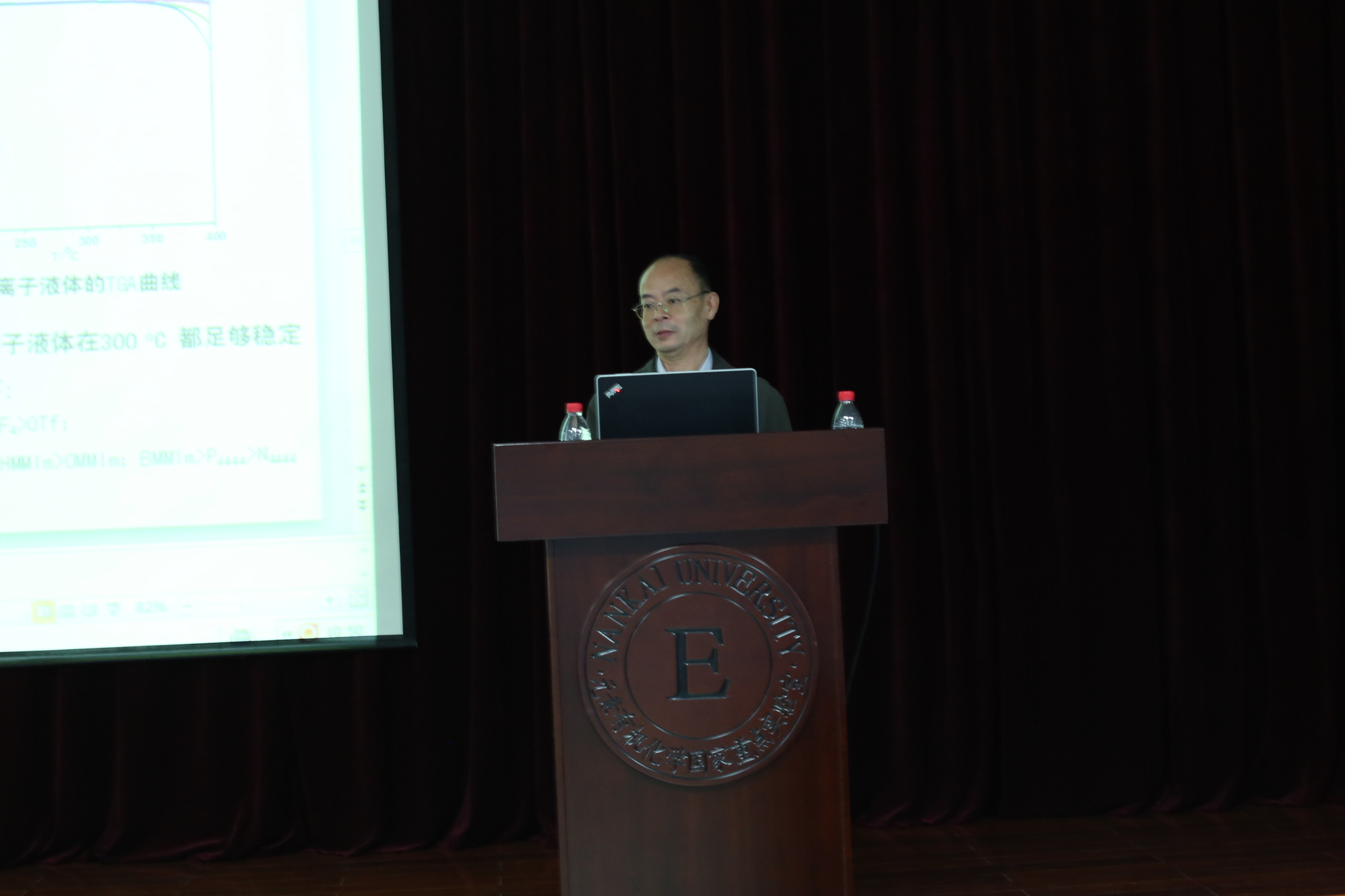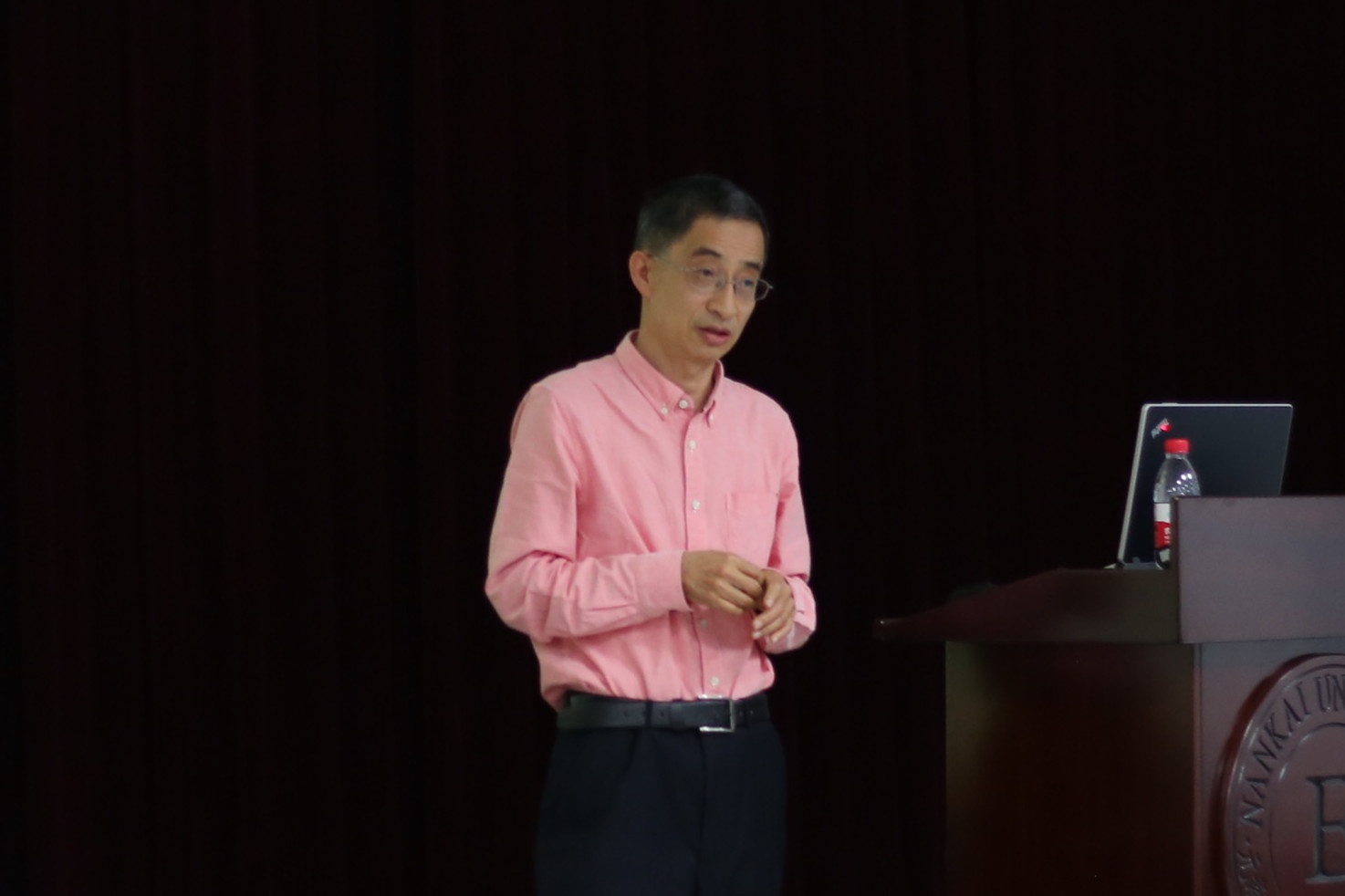The 2016 symposium on green chemistry took place at the State Key
Laboratory of Elemento-organic Chemistry on May 24th. Professor
Liangnian was the host of this symposium. Prof. Youquan Deng of Lanzhou
Institute of Chemical Physics CAS, Prof. Guohua Gao of East China Normal
University, Prof. Wanzhi Chen of Zhejiang University, Prof. Ming Bao of Dalian
University of Technology, Prof. Yizhuo Han of Institute of Coal Chemistry, CAS respectively
made wonderful academic reports in the Lecture Hall of the Synthesis Building
of the Institute of Elemento-organic Chemistry. The invited speakers also had
in-depth discussion and communication with research faculties and students of
SKLEOC on current hotspot issues in green chemistry.

In his report titled “direct and indirect catalytic conversion of CO2 and green process studies”, Prof. Youquan Deng first shared his ideas, feelings,
challenges, and visions in the utilization of carbon dioxide. Subsequently, he
introduced his research group’s work in the chemical conversion of carbon
dioxide catalyzed by functionalized ionic liquids, and expounded the chemical
process for the preparation of polyurea by carbon dioxide and diamines. Prof.
Deng also emphasized the relations amongst solvent, ionic liquid and catalytic
reaction performances. Finally, he further discussed the green synthesis route
in which isocyanate is produced through a phosgene free method with urea serving
as the carbonyl source, leading to indirect conversion of carbon dioxide.

In his report titled “catalytic conversion of carbon dioxide by ionic liquid/synthesis
of fine organic chemical products by carbonic esters”, Prof. Guohua Gao introduced
his research group’s new method of catalyzing the reaction of aniline and
carbonic esters, and the 3 component synthesis of 2-oxazolidones with aniline,
CO2 and epoxides by taking ionic liquid as the catalysis. He further
discussed the mechanism and influential factors for catalyzing similar reactions
of by ionic liquid. Subsequently, Professor Gao narrated his research group’s
achievements in poly ionic liquids.
In his report titled “simple synthesis and catalytic reactions of metal
N-Heterocyclic carbenes”, Prof. Wanzhi Chen first introduced the unique nature
of metal N-Heterocyclic carbenes and their extensive applications in chemical
reactions. However, the preparation of such carbenes usually required strictly anhydrous
and anaerobic conditions. This background inspired his research group to develop
a more robust method of preparing N-hetereocyclic carbenes. Prof. Chen
demonstrated that by replacing the metallic compounds with metal powders, they
can produce N-hetereocyclic carbenes under aerobic and even aqueous conditions.
In his report titled “copper catalyzed preparation of aryl halides and studies
on halogen exchange reaction”, Prof. Ming Bao first introduced his research
group’s research progress in cupric oxide-catalyzed synthesis of aromatic chlorides.
He then discussed his group’s studies on the halogen exchange reaction, and
expounded the process of exploring the reaction mechanism.
In his report titled “low-temperature methanation process of syngas and catalyst
preparation”, Prof. Yizhuo Han first introduced the background for research of
coal chemical industry and restrictions of carbon dioxide emission on the development
of coal chemical industry. He then narrated Shanxi Province’s unique advantages
in coal resources, and abundant coalbed gas and coke oven gas in Shanxi
Province lead to the research on production of hydrogen by coalbed gas and coke
oven gas instead of water gas. In addition, Prof. Han expounded the new process
for catalyzing methane and carbon dioxide reforming by embedded nickel/zirconium.
Wonderful reports by the five speakers
and at the frontier fields of green chemistry aroused much interest from attending
faculties and students of the SKLEOC. After the conference, the audience discussed
enthusiastically with the speakers in terms of new ideas, strategies, and
reaction mechanisms.